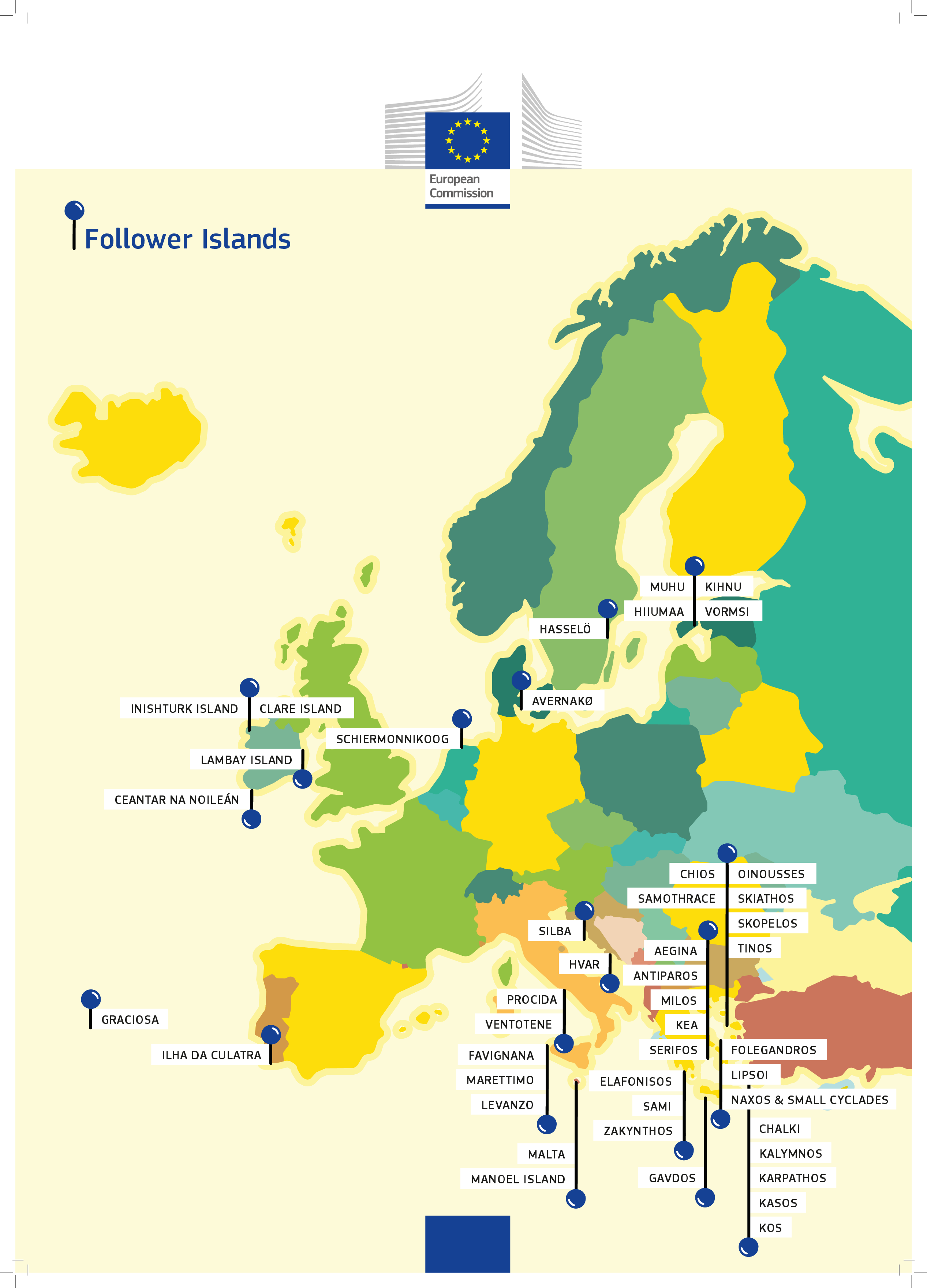
The Clean energy for EU islands secretariat officially launched the Follower Islands Programme this April with information-rich webinar on energy planning and vision-making. Bringing together island representatives, technical experts, and local authorities from across Europe, the event was the starting point for an ambitious process to support EU islands on their path toward clean energy transitions.
Kostas Komninos, General Manager of DAFNI – Network of Sustainable Greek Islands – opened the session by highlighting the increasing importance of local governance in energy planning. He explained that although traditionally managed by national governments and utility operators, energy planning is rapidly becoming a local responsibility. As EU legislation increasingly calls on municipalities to prepare annual energy and emissions reduction plans, island communities can now shape their sustainable futures. Komninos emphasised that the Clean Energy Transition Agendas (CETAS), the key planning instrument of the Clean energy for EU islands initiative, are not just technical documents but inclusive roadmaps that integrate community engagement and long-term vision.
Martina Cannata from 3E, who coordinates the Follower Islands Programme, followed with an overview of what lies ahead for participating islands. She explained that the programme will offer a series of country-specific webinars exploring national regulatory and technical frameworks and in-depth capacity-building workshops on key aspects of clean energy transition. Peer-to-peer exchanges between Follower Islands and those already developed CETAs will also be facilitated, allowing participants to share experiences, best practices, and practical solutions. Cannata stressed that energy planning is the first, essential step toward full decarbonisation and encouraged participants to stay engaged throughout the programme.
A central moment of the webinar came with the keynote speech by Alexis Chatzimpiros of the Samsø Energy Academy in Denmark. Drawing on Samsø’s internationally recognised experience as one of the first carbon-neutral islands, Chatzimpiros shared valuable insights into the social dimensions of energy planning. He argued that successful projects start not with technology but with people. Communities must first be asked “why” they are embarking on a clean energy journey—what problems they wish to solve and what kind of future they want to create. Only after that should “what” and “how” be addressed. Samsø built community consensus and ownership around renewable energy projects using participatory methods such as open space workshops. Chatzimpiros shared examples of how local concerns about landscape and livelihood were balanced with technical feasibility and stressed that a project is only as strong as the support it has from its local stakeholders. For instance, Samsø’s offshore wind park was placed in a less financially optimal location to ensure community acceptance—an investment in trust that paid off over time.
DAFNI’s Petros Markopoulos and Stefania Ventouri led the technical segment of the session, walking participants through the CETA development methodology. They explained how islands can establish energy baselines, evaluate demand and supply options, identify renewable potential, and translate this data into coherent, actionable plans. Emphasis was placed on combining robust data with community consultation to create technically sound and socially supported strategies.
Case studies presented by islands already active in energy planning gave participants a closer look at how strategies can be implemented in diverse contexts. Islands such as Cres (Croatia) and Pantelleria (Italy) shared lessons learned from developing CETAs, while the Cyprus Energy Agency presented its work in supporting over 300 local authorities in drafting Sustainable Energy and Climate Action Plans (SECAPs). These initiatives have focused on tackling energy poverty, upgrading public infrastructure such as schools to nearly zero-energy standards, and improving quality of life while reducing emissions. The potential for synergies between CETAs and SECAPs—particularly within the framework of the Covenant of Mayors—was also explored.
One recurring theme emerged throughout the webinar: energy transition must be collaborative. Participants discussed the importance of designing projects with transparent benefits, local ownership models, and citizen involvement from the earliest stages. Practical questions around financing, spatial planning, and local investment were addressed as essential to successful implementation.
Looking ahead, the Secretariat invited all participants to remain actively engaged in the Follower Islands Programme and take advantage of the support offered in the coming months. In addition to technical webinars and workshops, financial support is available for representatives to attend the upcoming Clean energy for EU islands forum on 14–15 May 2025 on the Azores.

